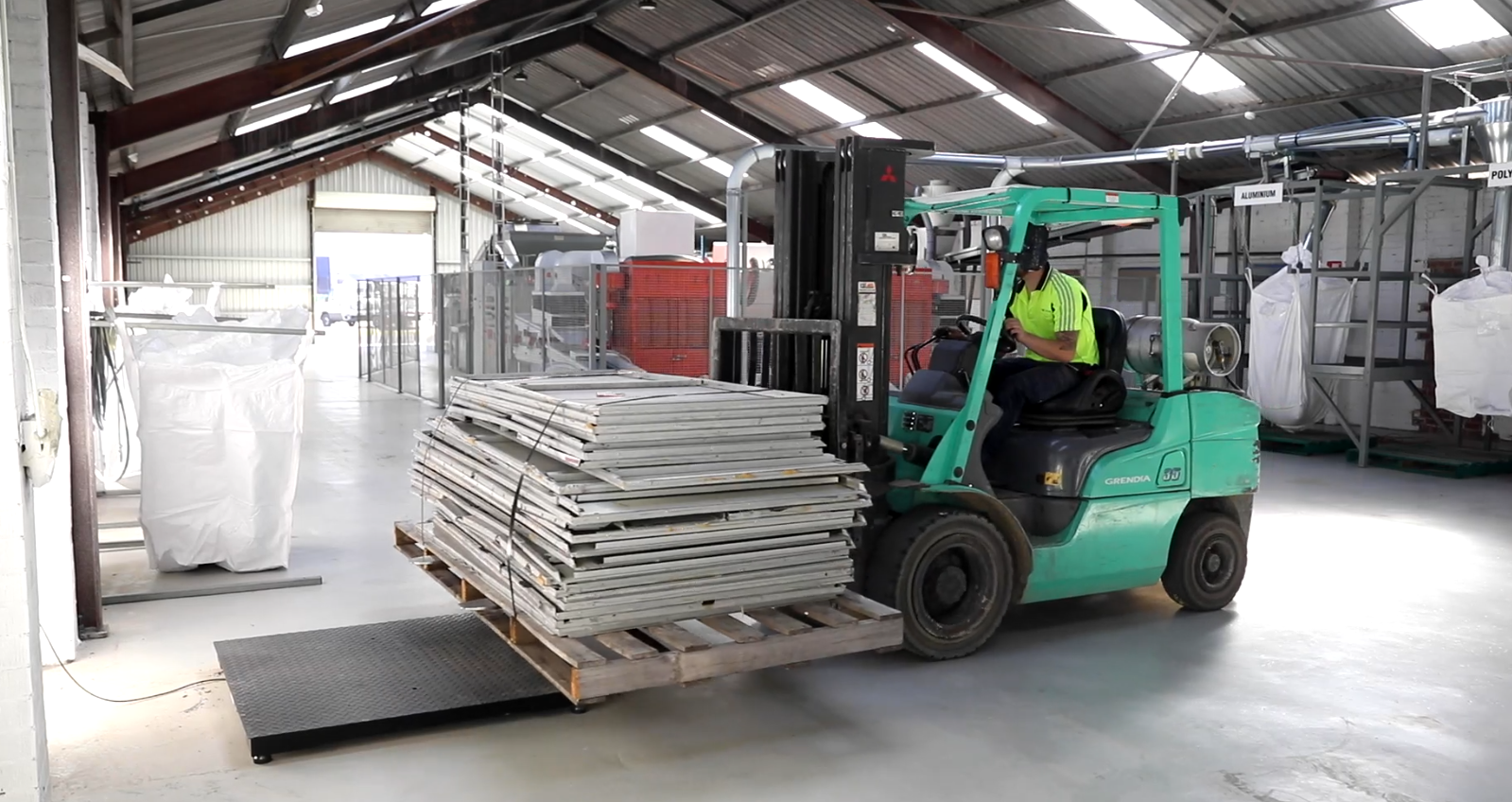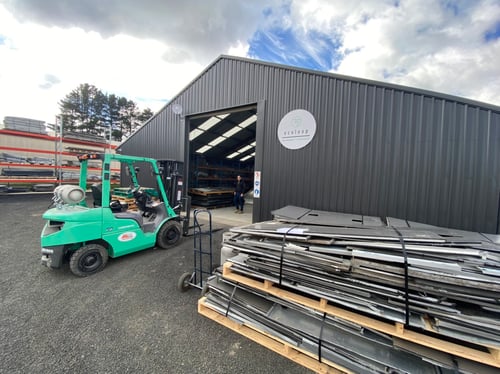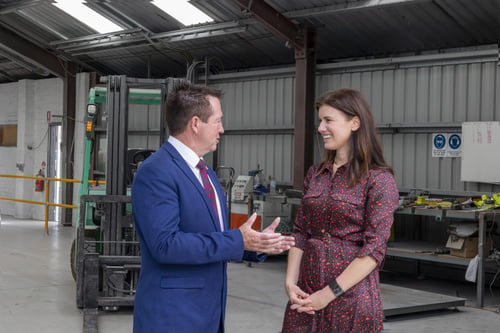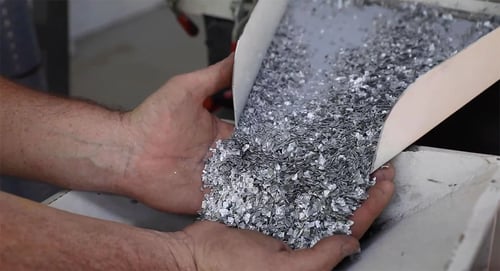Since the Australian government mandated the removal of combustible Aluminium Composite Panel (ACP) building materials from high rise buildings, there has been a scramble to carry out rectification works, tearing down the combustible materials and replacing them with compliant alternatives. After removing ACP from the building, builders and rectifiers need to dispose of it – the question is, how do you remove ACP panel cladding sustainably? Rather than sending it to landfill, there is another way – ACP and its components can be entirely recycled! ACP recycling is the environmentally friendly solution that reduces waste. Read on to find out how you can add this sustainable step to your rectification works.
Can ACP be Recycled?
Aluminium Composite Panels, or ACP, are cladding panels consisting of two aluminium skins and a plastic core, usually made from high-density polyethylene. Although this core is highly combustible, there is good news – it is also highly recyclable! In fact, every component of an ACP panel can be recycled – the aluminium, plastics and even the accessories can be repurposed. To recycle ACPs, they are transported to the recycling centre, documented and shredded. The shredded material is then separated out, bagged and sent off to metal and plastic manufacturers to be transformed into new products.
Learn more about Ecoloop, Australia’s first ACP recycling solution.
Benefits of Recycling ACP building materials
Make your buildings safe – with the added bonus of making a green footprint and contributing to the conservation of our environment! ACP recycling has many environmental and social benefits that will make your rectification projects even better.
Landfill Diversion
Say goodbye to excess building waste ending up in landfill – ACP recycling with Ecoloop, ensures 100% landfill diversion! ACPs will not break down over time, so recycling them saves excess waste from piling up.
Lower Carbon Footprint
Recycling your ACPs gives the materials new life, reduces wastage and provides recycled material for manufacturing, offsetting virgin material production for aluminium and polyethylene. This means energy consumption is reduced, and your greenhouse gas emissions are significantly lowered.
Australian jobs
ACP recycling fills a need in the Australian market – and in the Australian job market as well! ACP recycling is being carried out across the country, as an Australian solution done to Australian standards – and with Australian workers. This creates exciting new employment opportunities for people in the construction and recycling industries.
Specific Project Reporting
ACP recycling programs are required to meet minimum Australian standards of reporting. Programs which comply with the Green Building Council of Australia’s (GBCA) Construction and Demolition Waste Reporting Criteria are audited by independent auditing bodies, and the results are made available to customers for transparent auditing. Project specific reporting means you and your customers can be confident that all ACP waste is recycled effectively and in alignment with Australian Standards.
The ACP Recycling Process
The ACP recycling process is an effective way to make sure every material used in your old ACP cladding can be reused to its full potential.
Material dropped off/picked up
Good ACP recycling programs will support you from start to finish in the rectification process – right from the moment your noncompliant cladding is removed. The panels are picked up, usually at the same time the replacement products are dropped off as a backload service, further reducing your carbon footprint. The ACP materials are then transported to the ACP Recycling plant for processing.
Documentation
The panels are weighed and recorded before they are processed, to aid transparent project-specific reporting.
Shredding
The panels are shredded, minimising storage onsite by breaking them down into manageable size pieces. This also makes it easier for them to be separated out into different materials.
Separation
The shredded panels are separated out by material – aluminium, polyethylene, other ferrous metals and mixed residuals.
Bagging for Repurposing
The materials are bagged and distributed to be repurposed by different manufacturers, to make sure every material can be appropriately reused and none goes to waste.
What Materials are Reused After Recycling?
The most exciting part of the ACP process is that ALL ACP building material is reused! Aluminium goes to a smelter, who can make it into new building or other products. Ferrous metals are sent to a metal recycler to be made into new metal products, while the polyethylene cores are sent to plastic manufacturers to become the next generation of plant pots, pipes, bottles and more. Even mixed residuals can be reused – they are diverted into a waste-to-energy process to offset the use of coal – so not a single shred of material is wasted! With no elements ending up in landfill, and all contributing to the manufacture of new products, ACP recycling helps contribute to a circular economy.
Start Recycling ACP today!
Recycling ACP building material is a must when it comes to rectification projects. A no-waste process that diverts 100% of ACP materials away from landfill and towards new manufacturing, ACP recycling programs make recladding a more sustainable process, and turn flammable cladding into something good. If you are undertaking recladding and rectification works, make sure you think about recycling your ACP before you even get started!
Ecoloop, the clever initiative by Fairview, is Australia’s first ACP recycling solution! Designed to help reduce the environmental impact of rectification works, Ecoloop is verified by the Green Building Council of Australia’s Construction and Demolition Waste Reporting Criteria. A holistic solution, Ecoloop manages all your components from the moment your rectification project begins. It also guarantees a bespoke ACP recycling service to help achieve your sustainability targets and offers project specific reporting for transparency and peace of mind.
Click here to learn more about the ACP Recycling Process through Ecoloop.



